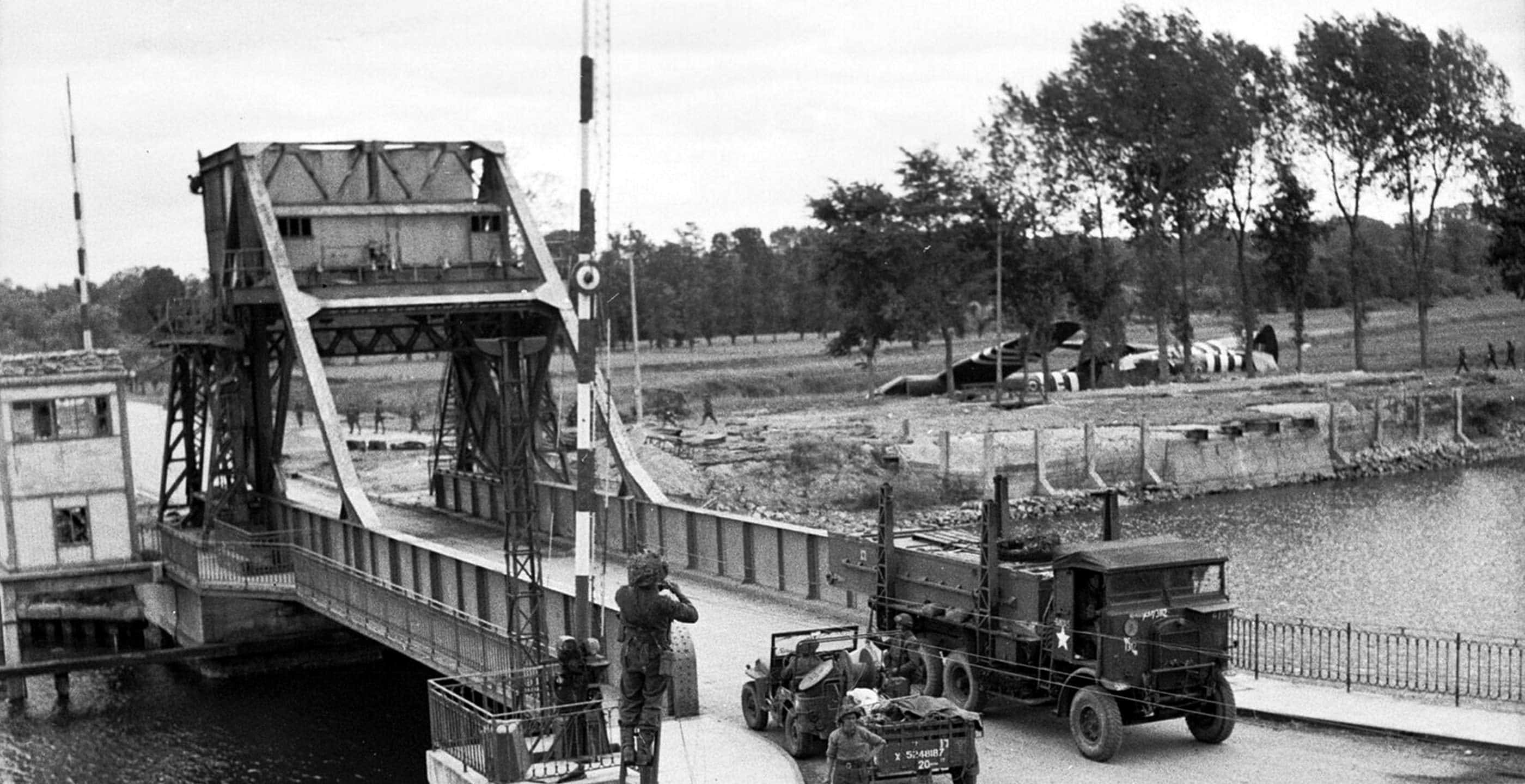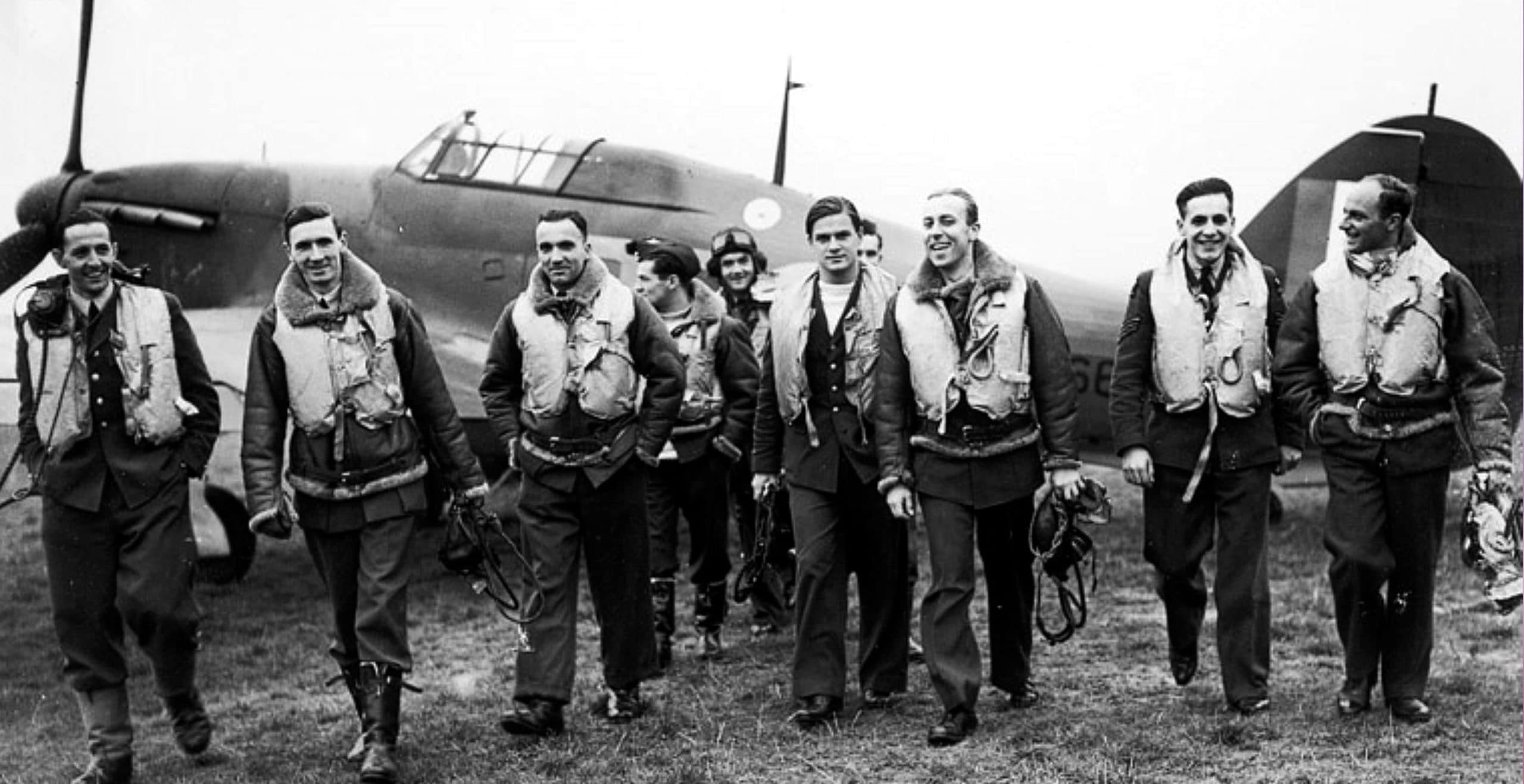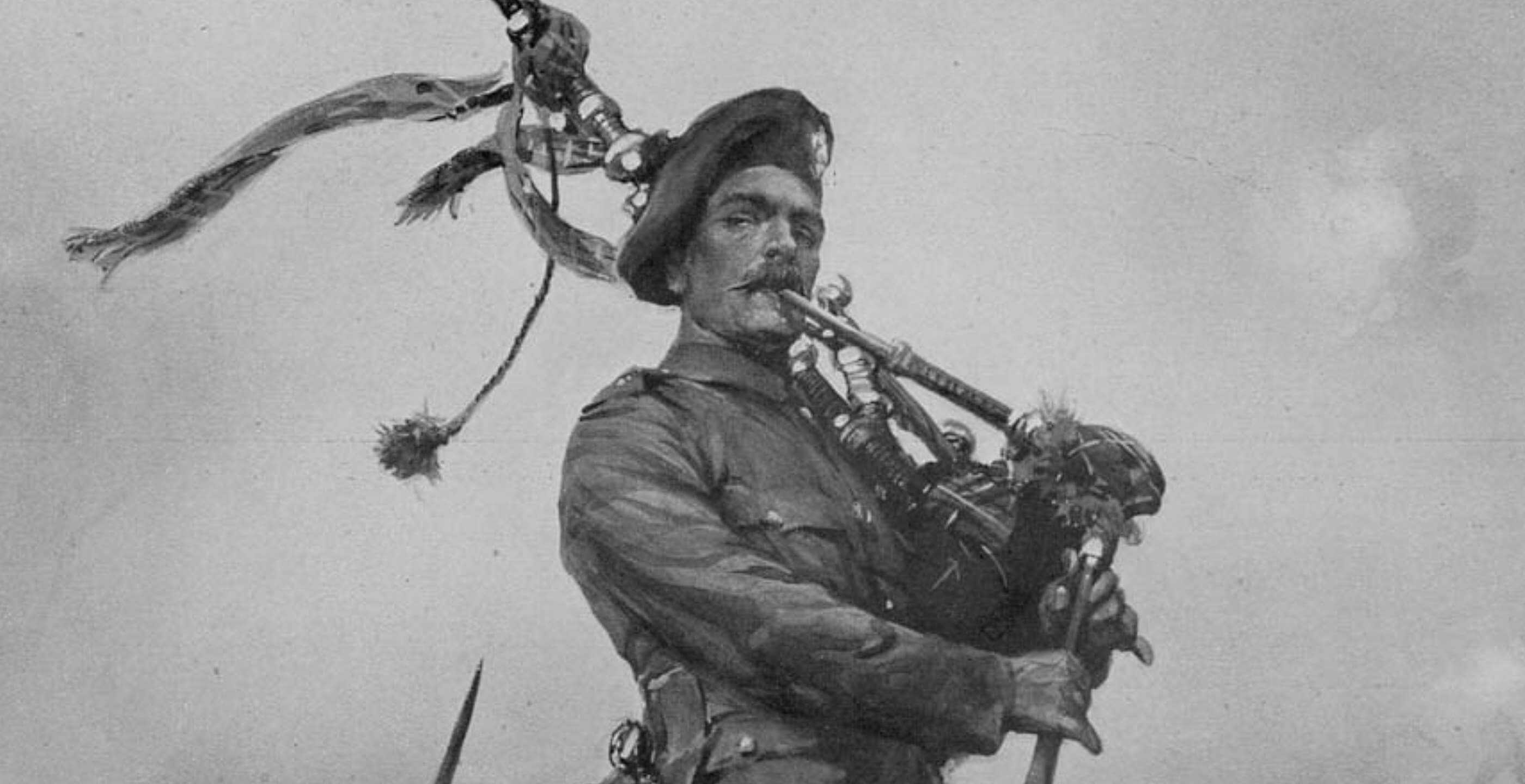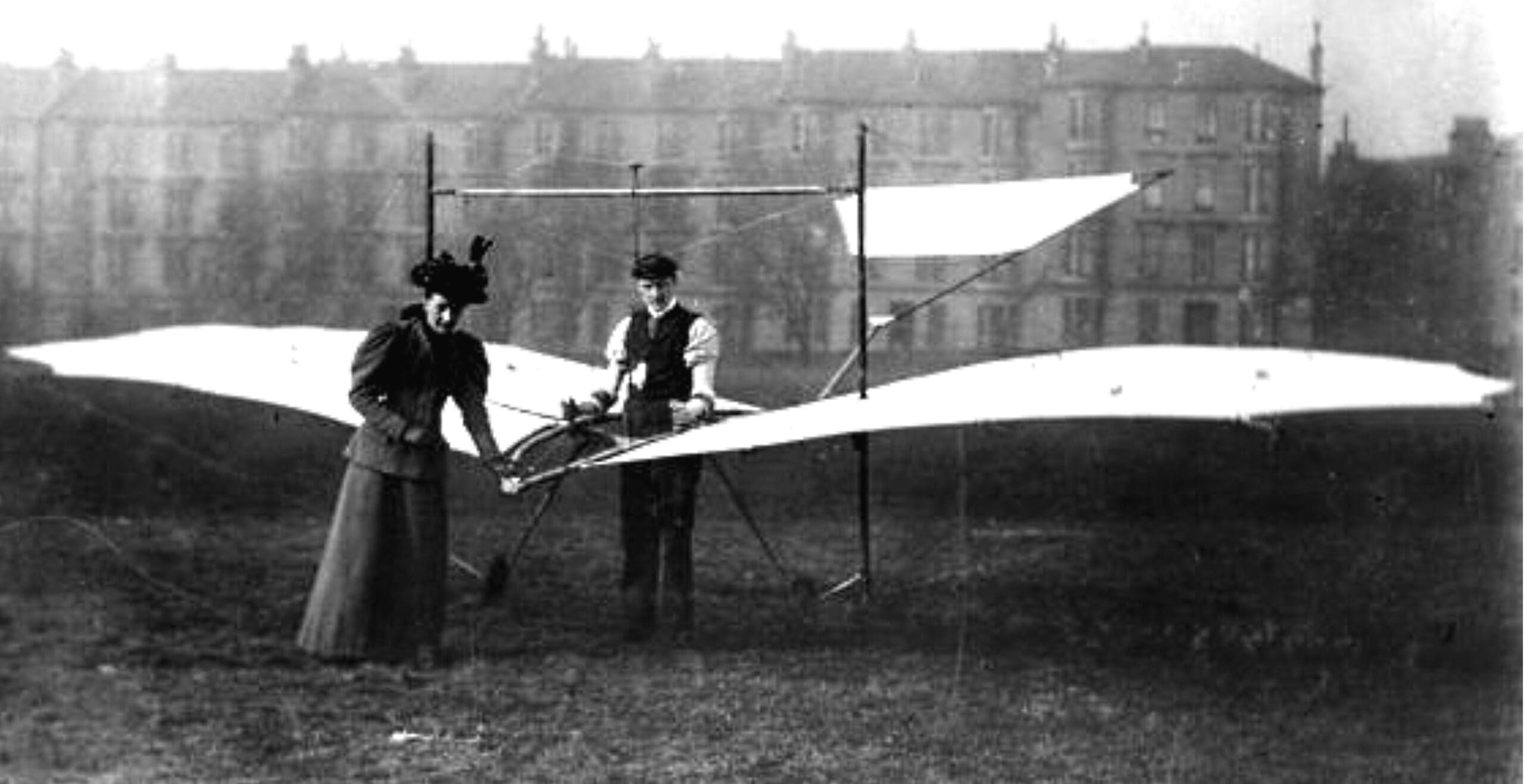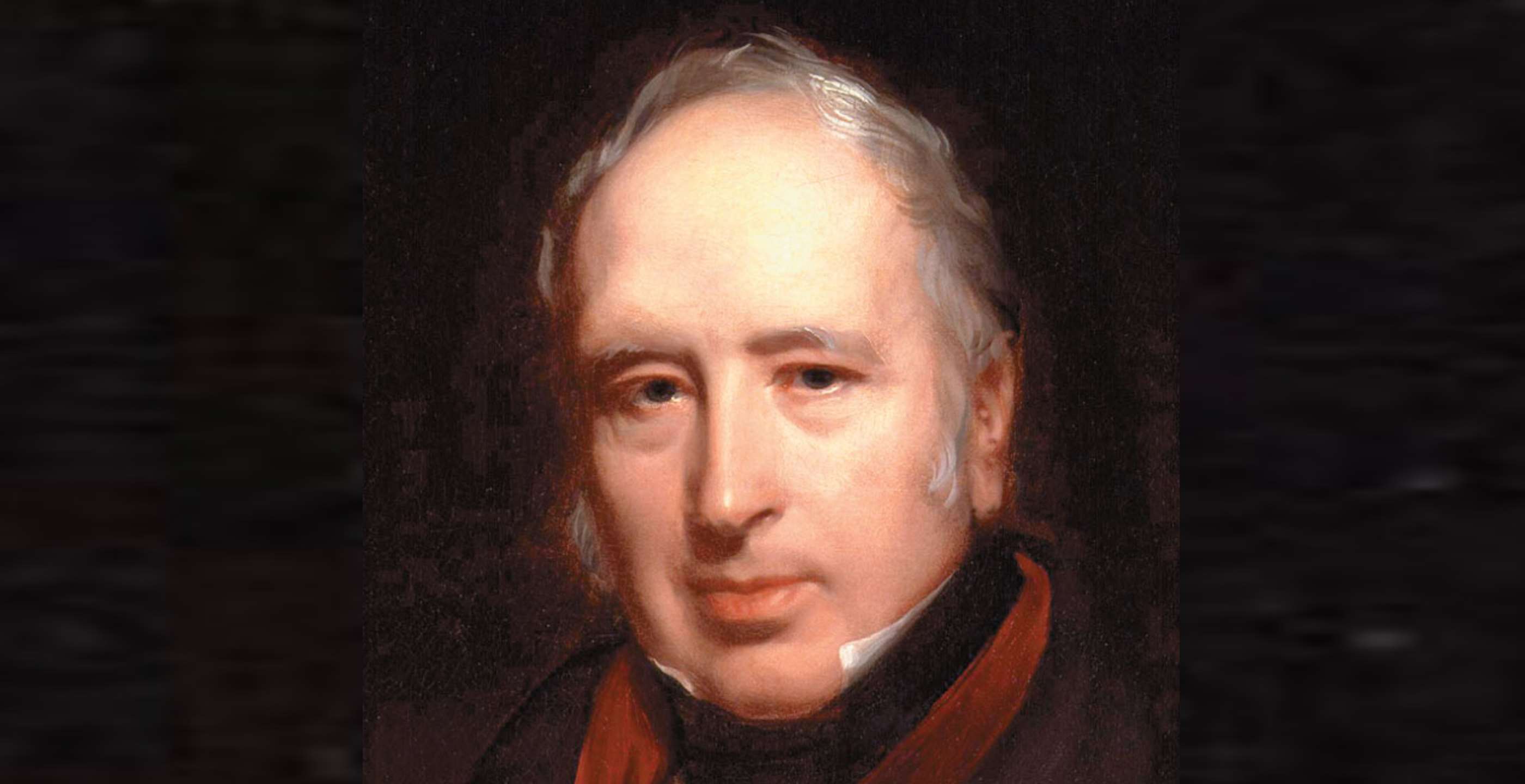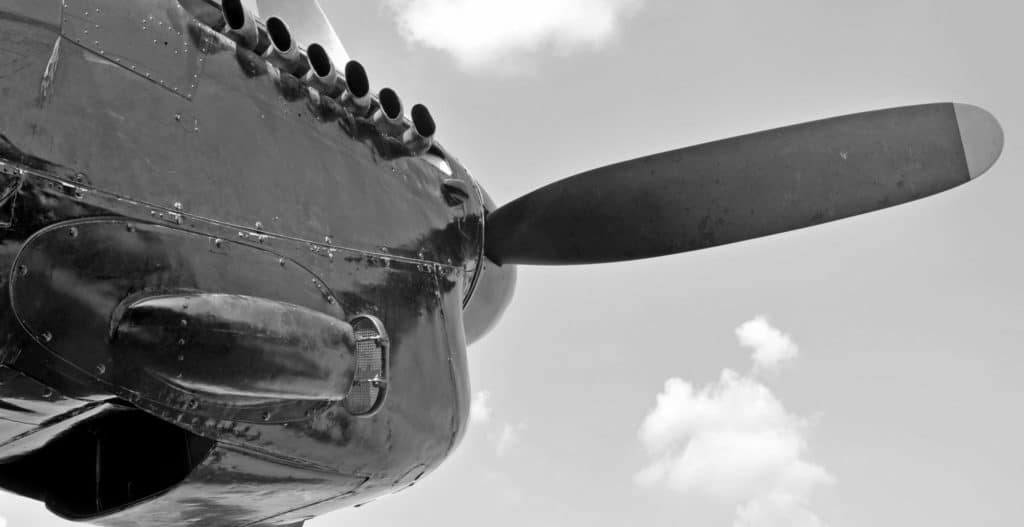Following on from the Wright Brothers’ invention of aircraft and their experimental use of engineless aircraft (gliders), it was during the 1936 Berlin Olympic Games that the sport of gliding was first introduced on a worldwide scale led by the International Olympic Committee (IOC). The demonstration of gliders at the Games took place on 4th August at the Berlin-Staaken airfield. A total of 14 pilots from across seven countries (Bulgaria, Italy, Hungary, Yugoslavia, Switzerland, Germany and Austria) took part in the demonstration, although no prizes were issued by the IOC.
Pioneering pilots such as the likes of Hanna Reitsch, a female German test pilot, soon showed promise for a career in the sport. Following the huge success and potential shown by these pilots, gliding was officially accepted by the IOC at their Cairo Conference in 1938, with plans to include it in the 1940 Olympic Games for the first time. The DFS Olympia Meise, a single seated glider was drawn up and prepared specifically for use in the 1940 games which were cancelled due to the outbreak of the Second World War and Finnish/Soviet Winter War.
After recognising the potential of gliders for military use, the German High Command approached the Deutsche Forschungsanstalt für Segelflug (DFS), the German Institute for Glider Research, to explore the possibility of using gliders to transport troops behind enemy lines. The Institute had previously designed the DFS-230, a lightweight transport glider, capable of carrying 10 men including the pilot. It is no surprise that following her early success, Hanna Reitsch was tasked with the role of piloting the first of the experimental flights. Whilst under the watchful eye of German High Command, Hanna was directed to land close to the target on the ground, successfully landing within 20 metres of the set target.
Training began with immediate effect, with the conscription of glider pilots from across Germany as well as the Fallschirmjäger (German Paratroopers) being pressed into action. On 10th May 1940 their moment came when attacking the impregnable Belgian fortress of Eben-Emael, just 30km from the German border. JU-52’s were used to tow the DFS 230 gliders releasing them at just over 2000ft altitude. These silent craft were able to launch an almost undetected assault, catching the Belgians by surprise. Reinforced by Germany’s Blitzkrieg tactics, the Battle of Eben-Emael was a colossal success demonstrating a major role for glider warfare during the Second World War.
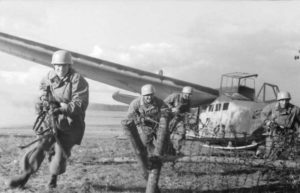 Fallaschirmjäger deploying into action from a landed DFS 230 glider.
Fallaschirmjäger deploying into action from a landed DFS 230 glider.
Licensed under the Creative Commons Attribution-Share Alike 3.0 Germany license. Attribution: Bundesarchiv, Bild 101I-569-1579-14A / Stocker, Dr. / CC-BY-SA 3.0
News of the German invasion of the Low Countries rapidly spread throughout Europe and the rest of the world, with the Allies desperately looking to replicate the use of gliders for transporting troops. Several prototypes were constructed by the Allies during 1940, two of which were built by Fairey and the remaining five by Airspeed. The most iconic of these was Airspeed’s ‘Horsa’ glider.
Horsa gliders were constructed primarily from wood in order to minimise their overall weight, being able to carry a jeep and 6lb anti-tank gun as well as up to twenty-five troops. This proved to be an extremely manoeuvrable aircraft despite being engineless and quite large in scale compared to its German counterpart. Due to the sheer size of these gliders, they were towed by a number of four and twin engine bombers including: Handley Page Halifax, Short Stirling, Armstrong twin-engine bombers and even the American C-47 Dakota. A large number of these gliders were also supplied on lend-lease to the U.S Army during the war, providing a much larger troop carrying capacity than the 13-seat American Waco CG-4A, known as the ‘Hadrian’ by the British.
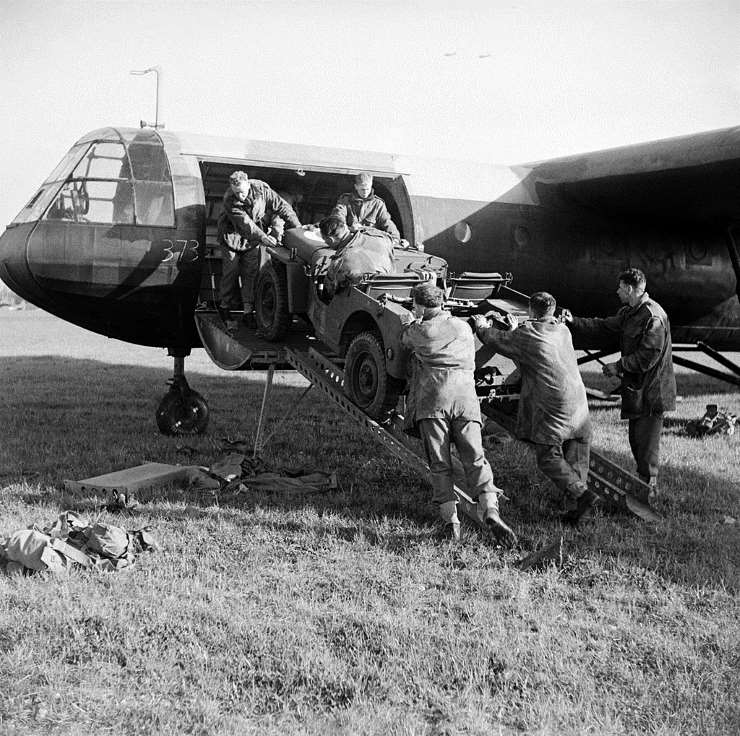
As part of an adapted design, the joint in the fuselage at the rear of the Horsa glider could be broken upon landing allowing for a rapid unloading of troops and equipment. This was also made easier by the ramps provided. While still in the early stages and as part of experimenting with ways to improve the glider in order to maximise it’s efficiency, it was originally set to be detonated by a ring of Cordtex. As can be imagined, this proved slightly impractical, especially with the added danger of enemy fire threatening to prematurely detonate the Cordtex. By 1944 this danger had been averted with the design of a detaching tail, held together by eight quick-release bolts.
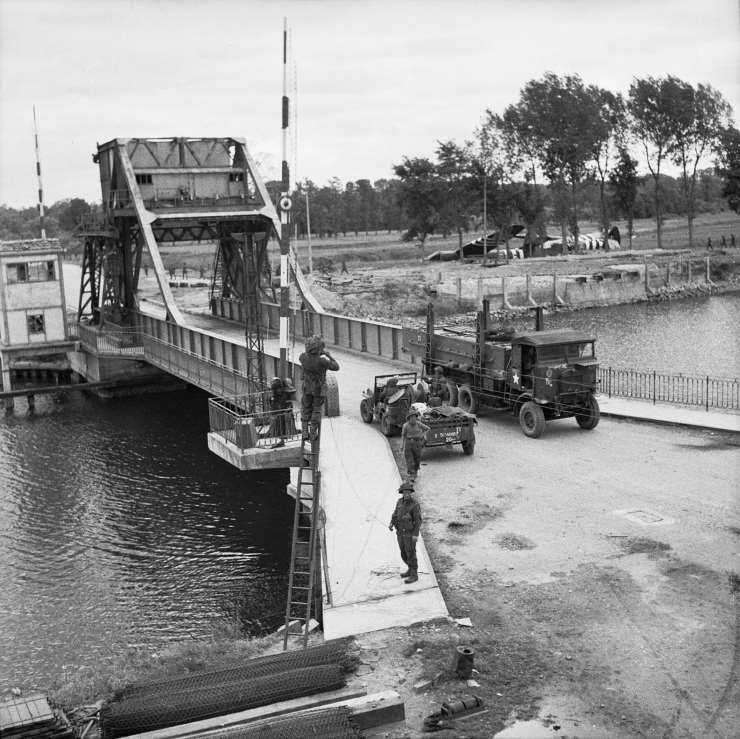
Britain’s first use of gliders took place in support of the Allied landings (Operation Husky) at Sicily on July 9th, 1943, with extensive use continuing into the latter war years such as the storming of ‘Pegasus Bridge’, signalling the start of Operation Overlord and the invasion of Allied forces in mainland Europe in June 1944. Prior to the D-Day invasion, high loses were predicted amongst Allied glider forces due to crash landings and the strength of the German defences. Despite predictions, initial losses were only 10-15%, with the use of gliders proving crucial to the success of the landings at Utah Beach.
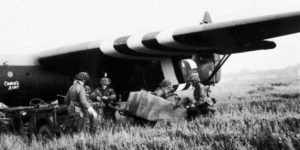 British airborne troops hitching a trailer to a jeep which has just been off-loaded from a Horsa glider near Ranville, on the evening of D-Day 6th June 1944.
British airborne troops hitching a trailer to a jeep which has just been off-loaded from a Horsa glider near Ranville, on the evening of D-Day 6th June 1944.
The Horsa glider went on to be used extensively throughout the war as a mode of transporting both troops and equipment to areas behind the enemy lines, becoming responsible for airlifting almost a quarter of all the air-supplies received during the Normandy invasion. Other Allied major operations where gliders were deployed included: Operation Thursday (Burma, March 1944), Operation Dragoon (Southern France, August 1944), Operation Market-Garden/Arnhem (Holland, September 1944), Operation Repulse (Bastonge, December 1944 – January 1945) and last but certainly not least, Operation Varsity (Rhine River Crossing, 1945 just some six weeks before the German surrender).
It is estimated that in total over 3,700 Horsa gliders were produced during the wartime years. With these increasing glider production figures, there was a growing demand throughout Britain and America for specific ‘glider-rider’ or ‘glider-pilot’ regiments to be established, each undergoing a series of rigorous training in the use of gliders. British glider-assault teams were attached to each of the Air Landing Brigades, made up of Airborne Infantry. Due to the danger and nature of the missions in which glider-pilot regiments were involved, casualty rates as high as 40% were not uncommon.
One of the main advantages for the use of gliders was that it proved the ability for large numbers to be deployed close together in such a short period of time, made increasingly more efficient with the accuracy of the glider pilots landing within such a close proximity to their intended target. In less than a decade, gliders went from first appearing on the world stage as a new and uprising sport to one of the Second World War’s most deadly weapons, allowing both Allied and Axis forces to maintain the element of surprise when invading.
By Peter Wood. Aged 23, Peter is a keen historical enthusiast with his main passion for history stemming from his introduction to historical re-enactment at a very young age. This passion has continued to thrive even to this day with his love for modern world history focussing around the period of 1914-1945.
If you would like to learn more about this article please contact the author by email: admin@axisallied.co.uk
